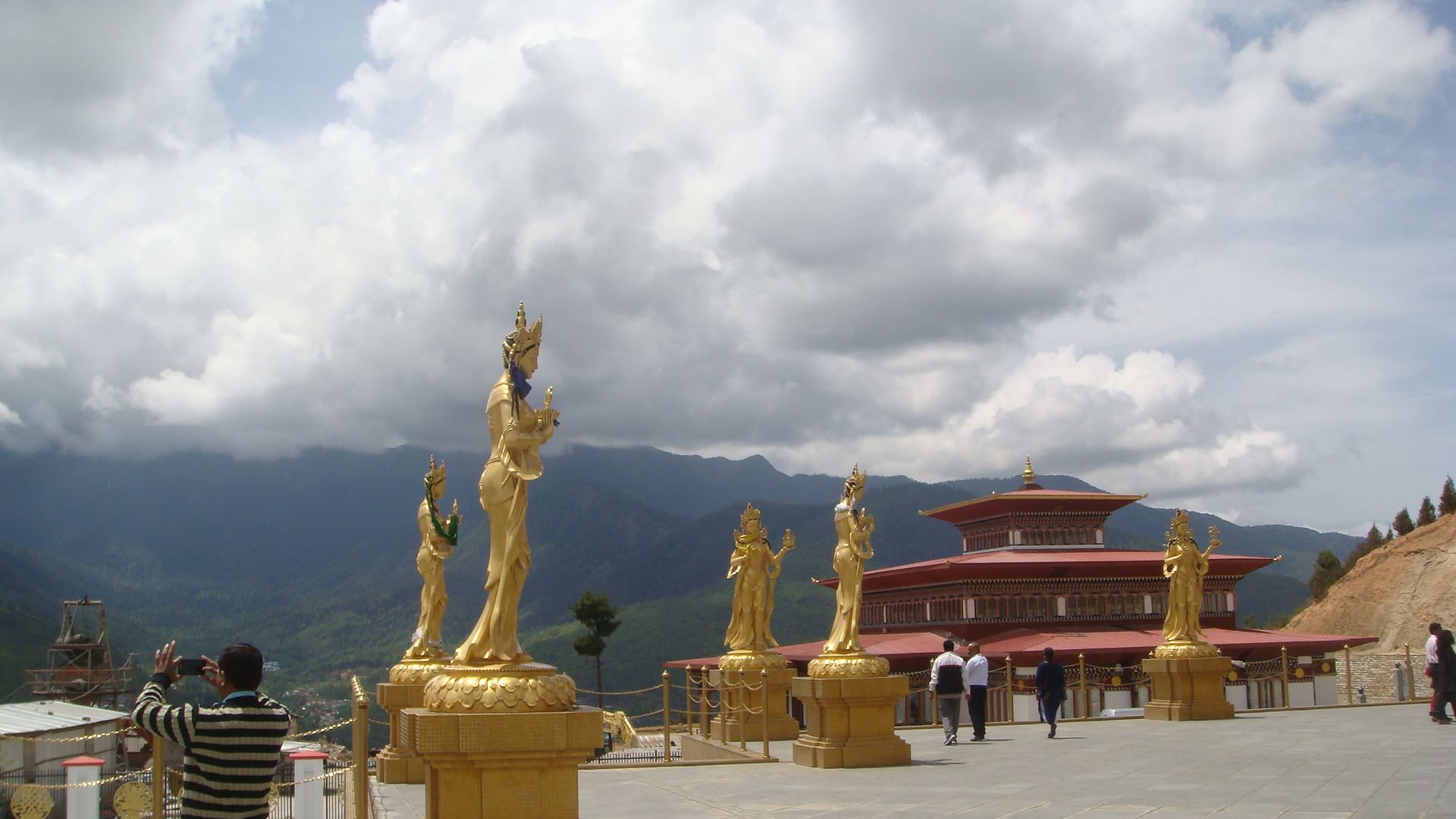
From the Paro Valley, hundreds of tourists looked up with trepidation. Will the mist be cleared to get a view of the golden peak of the iconic Taktsang Monastery (Tiger’s Nest) situated on a steep cliff at 3500 mts high? The sun peeped out through the mist and clouds and that was a motivation for us to embark on the three and half hour hike to visit that marvellous beauty redolent with Buddhist motifs.
I was on a trip to Bhutan, through Yatra Tour agent. Bhutan is a land-locked little country with scenic hills and valleys, stunning Dzongs, magnificent stupas and statues of Buddha.
On the first day of my trip, we landed at Paro airport. It is in a beautiful valley surrounded by mountains. From there, a two and half hour journey to Thimphu gave us breathtaking views of the hills and valleys and gurgling rivers. It was interesting to know that the rivers are termed as male and female; like Pochu (male) and Mochu (female).
At Thimphu, we enjoyed the beauty of the valley and hills and also watched the national game of Bhutan, archery. We ate at a local hotel where it was interesting to see the male hotel staff dressed in the traditional ‘Gho’, a knee-length robe with a traditional long belt, and young women dressed in ‘Kira’.
Our next destination was ‘Changangkha Lhakang’, a temple perched like a fortress on a ridge, dedicated to a deity who protects newborns.
Another must-visit place is the gigantic bronze statue of Buddha (177 feet) atop a mountain. It is three storied with several chapels covered in bronze. The National Memorial Chortem, a stupa, is also an example of incredible Bhutanese architecture.
The next day, we went to Punaka, known for beautiful Dzongs. Dzong architecture is a unique feature of Bhutan with towering exterior walls surrounding courtyards, temples, offices and monks’ accommodation. Among all the Dzongs we visited, the most beautiful was Punaka Dzong. It is built on the banks of a confluence of two rivers and has three-layered golden domes.
Next on the itinerary was Do chu La Pass. Looking around the pass was a treat to our eyes — you get an amazing sight of the 108 glittering stupas built in honour of 108 Bhutanese soldiers who died in a 2003 military operation.
The stupas stand majestically, patterned with white, brown and golden colours on a lush green hill in sylvan surroundings, representing values of chivalry, patriotism, integrity and self-pride.
Next, we went to the National Museum which encapsulates the rich culture and history of Bhutan. Then we proceeded to Paro.
The visit to Taktsang Monastery (Tiger’s Nest) was the icing on the cake. Tiger’s Nest lies about 3500 mts above sea level, on a steep cliff.
It takes a three and half hour arduous hike to reach there but is worth it as you get to see the bewitching beauty of the mountain with lush green oaks and rhododendrons, cascading waterfalls, awe-inspiring caves and the man-made wonder, the temple.
The architecture is made up of four temples, uniquely designed to rest on the mountainside.
On the hike along the steep cliff, covered by verdant foliage and home to rhododendrons and oaks, we were greeted by prayer flags and prayer wheels’, immersing us into the religious and spiritual essence of the mountain.
The hike ends at the foot of the 700 steep steps to the temple and the high waterfall tumbling down a precipice with a resounding crash and vanishing into the crevices of the hills.
We had an eyeful of the beauty and serenity of the place; soaked in the mystical legends narrated by our affable guide and began hiking down the cliff.
How to get there:
Take a Bhutan Airways flight either from Kolkata or Delhi to Paro,the only international airport of Bhutan. Citizens of India are allowed to travel to Bhutan by getting an entry permit.
Places to stay:
There are hotels and resorts at affordable prizes. Indian currency is accepted in Bhutan. Bhutan’s currency is Nu and the rate of exchange is 1:1.